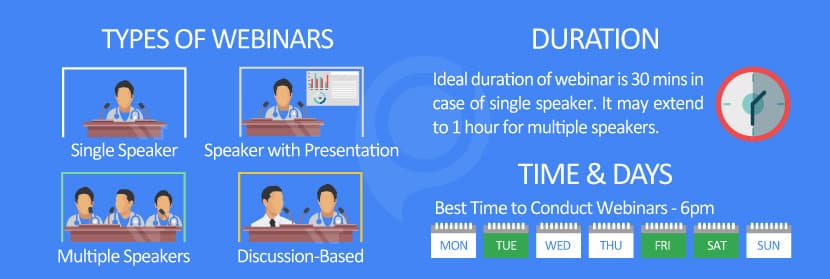We (the marketing team) spend an unreasonable amount of time on lead generation – creating in-depth blog content, reaching out influencers, launching ad campaigns, producing videos, hosting webinars, and so much more.
Businesses need to generate leads somehow. Have you ever received a cold call? Or a sales pitch through email? That is a form of lead generation. It is not at all easy to come up with a list of prospects who would want to have your services or purchase a product from you. That’s a challenge! But it does need to be done, so how do you get leads?
What is lead generation?
Lead generation is developing an interest in a person so that he/she becomes enthusiastic to get more information and perhaps end up buying it. The whole process involves stimulating and capturing interest in a product for sales.
Many startups find lead generation a huge challenge. In the B2B (Business-to-business) section, lead generation involves strategies, techniques, and ideas that can convert website visitors to leads and that help sales professionals find the decision maker’s contact details. Because many website visitors don’t convert on the first visit, there are online tools that tell you exactly who’s visiting your website and how to reach them, otherwise, they may be gone – never to return. Moreover, it helps reach high-value companies.
A firm may have several important goals, but 66% of organizational goals focus on lead generation, that’s a fact. If you’re looking for lead generations tips, here are my top tried methods for lead generation. Let’s get started:
1. The content strategy phase
Before a company can grow, they need leads, and content works for us as a good lead generation strategy. Content just doesn’t mean creation but content promotion as well because it is important for your prospects to see your content.
What’s the main goal of your content?
First, I aim at building relationships with the right people – ones who are likely to convert into becoming leads and eventually customers. So, before sitting down to write a blog post, find a topic that interests your audience and ties into the brand. For your brand, ask yourself these questions:
- What are the problems that can be solved for your customers?
- How can you differentiate yourself from others on the topic?
- Make sure you know the difference between the target market and target customers?
- How to attract and leverage the right people?
At the end of the day, if your content is not related to helping your customers solve a real problem, your content will not hold any meaning. And obviously, content that asks readers to buy in the initial sentence is disappointing. You need to be a teacher—who invests in the future of students (customers).
2. Grab your webinar audience
If you’re a B2B marketer, apart from word of mouth referrals, one of the most effective ways to generate qualified leads, is webinars. A survey by MarketingProfs found that 70% of marketers view webinars as a great way to generate qualified leads. It simply means bringing people together to educate them, to produce hot leads.
Lead generation is often regarded as the most challenging, but through webinars, we reach a large and targeted audience while capturing extremely useful information about them. Research analyst firm Forrester found that webinars were found to be the number-one source of lead generation for B2B businesses.
A good starting point for finding topics for your webinar is:
- Look at the existing marketing content that has already sparked interest
- What social media topics are trending on Twitter, Facebook, and LinkedIn
- Subscribe to industry newsletters (competitors)that cover your industry
Creative webinar formats to try:
- Q/A or panel discussion
- Reveal insider information
- Interview
- Target pain points
Having said that, if you’re hosting a webinar and linking it directly in your content, it will leave more impact on your leads, because it provides value to them.
3. Social media lead generation
As per the figures, almost 55% of internet users are on social media. In 2020, it is estimated that there will be around 2.9 billion social media users around the globe, up from 2.62 billion in 2018.
Social media campaigns have always remained an important part of ProofHub. The business grew by 24% using social media for lead generation. Here are a few tips I’d give you for lead generation through social media:
- LinkedIn’s rapidly growing publishing platform is the perfect place to show your expertise as a thought leader
- Engage with people (influencers) in your industry
- Create slide decks on SlideShare that are highly relevant to your target audience
- Getting right on Twitter: emojis, memes, and information
4. Get press coverage with HARO
Help a Reporter Out, or HARO is where journalists from all over the world look for sources and experts on various topics. You might be thinking: How is that relevant to B2B lead generation?
Well, if you use it the right way it can be very helpful. We have made it part of our daily routine to read over the HARO editions that are relevant to our industry. When you find a query related to your industry, pitch a reporter, always be specific. Make sure you’re sending a very thoughtful response. Also, when you submit your reply, include your author bio and the link to your website. Write it out exactly how you want the audience to read it.
Many big media outlets are using the service: Mashable, Time, Wall Street Journal, and New York Times just to name a few. HARO is a way to generate high-quality backlinks. But be patient and keep providing high-quality responses to the queries.
5. Get rated on review websites
Well, more than 88% of online shoppers look for reviews when making their purchase decisions. When it comes to generating B2B leads, customer reviews and testimonials are indispensable. After all, when reviews are talking about your service or products, it will be easy for your audience to get swayed.
Here are the trends emerging about third-party review sites:
- Both B2B and B2C businesses are using third-party review sites for lead generation
- Business reviews shape a company’s online reputation
- Review sites bring in more qualified leads than other lead generation methods
And, here is a list of top consumer and business review websites:
- Google My Business
- Amazon
- Yelp
- Angie’s List
- G2 Crowd
- Capterra
Stay ahead of the game
There you go! Lead generation might be overwhelming at first. But for your business, it is predominant if you want to keep progressing. To generate leads consistently, you need to put on significant efforts. I hope these tips will provide you with a useful takeaway to take your lead generation efforts to the next level. Just play your cards right, your leads will become your customers and your brand ambassadors. If you think this is interesting, you may find that growth via pirate metrics can help you grow even more.
Don’t forget that you can also use your existing CRM data to continue to grow.





